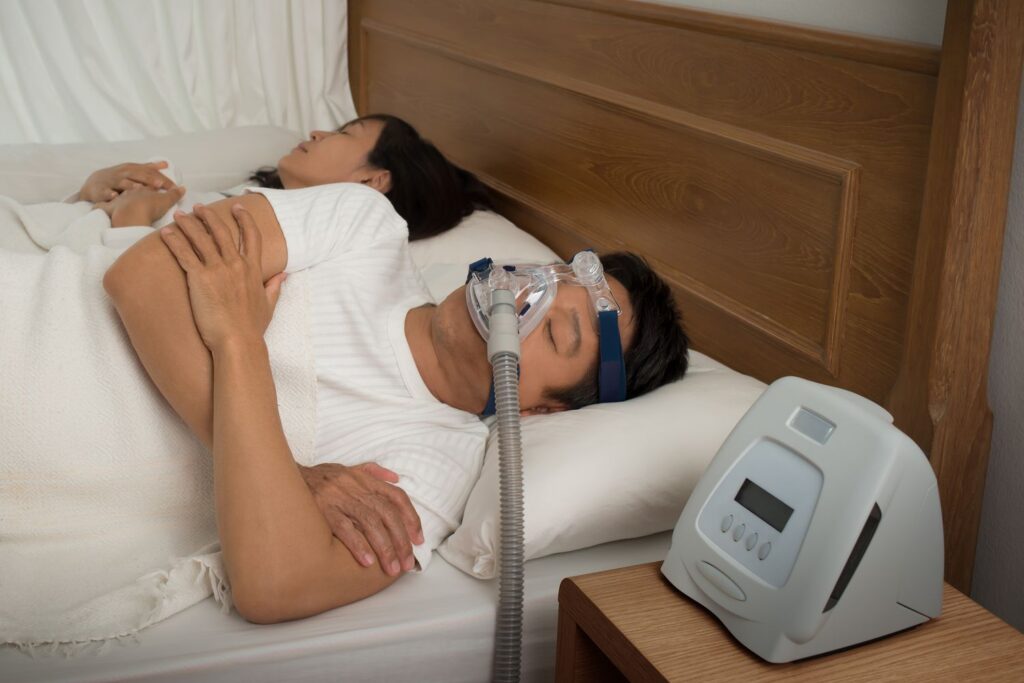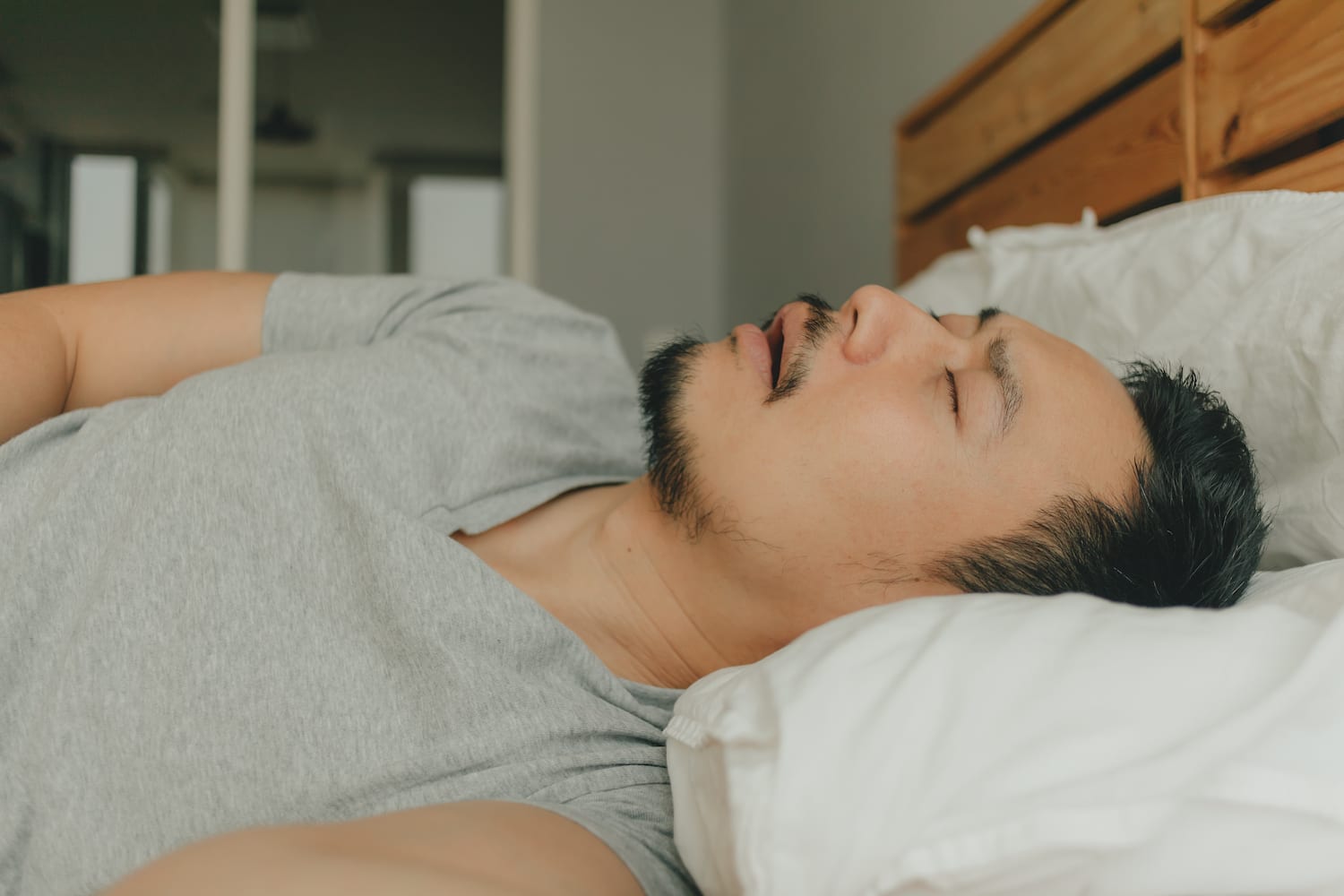Introduction – The Silent Struggle Many Women Face
When most people picture someone with sleep apnea, they imagine a middle-aged man who snores loudly and wakes up gasping for air. But this stereotype hides an important truth: sleep apnea is also common in women — and it’s often overlooked or misdiagnosed.
Sleep apnea is a serious sleep disorder in which breathing repeatedly stops and starts during the night. These pauses in breathing can happen dozens, even hundreds, of times, reducing oxygen levels and preventing deep, restorative sleep. Left untreated, it can lead to high blood pressure, heart disease, diabetes, depression, and even stroke.
For women, the problem is compounded by the fact that their symptoms often don’t match the “classic” profile doctors expect. Instead of loud snoring, women may report fatigue, insomnia, morning headaches, or mood changes — signs that can be easily mistaken for stress, anxiety, or menopause.
This is why it’s so important to understand the unique ways sleep apnea can show up in women and to recognize the warning signs early.
See more: Level 3 Sleep Study: The Most Efficient Way to Diagnose Sleep Disorders
Causes of Sleep Apnea in Women
While the root cause of obstructive sleep apnea (OSA) is the same — an airway that becomes blocked during sleep — several factors can make women particularly vulnerable.
1. Hormonal Changes
Hormones like estrogen and progesterone play a role in keeping airway muscles toned and regulating breathing. During pregnancy, menopause, or conditions like polycystic ovary syndrome (PCOS), hormone levels shift, increasing the risk of airway collapse.
2. Weight and Body Fat Distribution
While excess weight is a known risk factor for both men and women, women tend to store fat differently — often around the neck and upper body after menopause — which can narrow the airway.
3. Anatomy
Some women naturally have smaller airways or jaw structures that predispose them to obstruction during sleep.
4. Pregnancy
Pregnancy can cause nasal congestion, weight gain, and fluid retention, all of which make breathing harder at night. Sleep apnea during pregnancy can raise the risk of complications like preeclampsia and gestational diabetes.
5. Lifestyle and Habits
- Smoking irritates and inflames airway tissues.
- Alcohol before bedtime relaxes airway muscles.
- Sedatives can reduce breathing drive during sleep.
Symptoms in Women – The Obvious and the Subtle
The challenge with diagnosing sleep apnea in women is that symptoms often look different from those in men.
Obvious Symptoms (Though Less Common in Women)
- Loud snoring
- Gasping or choking during sleep
- Witnessed pauses in breathing
Subtle or “Non-Classic” Symptoms
- Chronic fatigue even after a full night’s rest
- Morning headaches from oxygen drops
- Insomnia or difficulty staying asleep
- Mood changes such as anxiety, depression, or irritability
- Brain fog — trouble focusing, forgetfulness
- Dry mouth upon waking
Example:
Sandra, 52, thought her constant exhaustion and irritability were signs of menopause. Her doctor initially treated her for depression. It wasn’t until her partner mentioned that she sometimes “stopped breathing” in her sleep that she was tested and diagnosed with moderate sleep apnea.

Why Women Are Often Misdiagnosed
There are three key reasons:
- Different Symptom Patterns – Women are more likely to report insomnia, headaches, and fatigue, which are often linked to other conditions.
- Bias in Medical Research – Historically, sleep apnea studies have focused on men, shaping how doctors recognize and diagnose it.
- Overlap With Other Conditions – Sleep apnea symptoms can mimic menopause, thyroid problems, depression, or anxiety, delaying correct diagnosis.
The Risks of Ignoring Sleep Apnea in Women
Leaving sleep apnea untreated can cause:
- Cardiovascular problems (high blood pressure, heart attack, stroke)
- Metabolic disorders (type 2 diabetes, weight gain)
- Mental health impacts (depression, anxiety, memory decline)
- Pregnancy complications (preeclampsia, gestational diabetes, premature birth)
Treatment Options – What Works for Women
The good news is, sleep apnea is highly treatable — and addressing it can dramatically improve health, energy, and quality of life.
1. CPAP Therapy
Continuous Positive Airway Pressure (CPAP) is the most effective treatment for moderate to severe sleep apnea. It delivers a steady stream of air through a mask to keep the airway open.
Benefits for Women:
- Restores normal oxygen levels
- Reduces morning headaches and fatigue
- Improves mood and concentration
2. Oral Appliances
Custom-made by dentists, these devices reposition the jaw or tongue to keep the airway open. They’re a good option for women with mild to moderate sleep apnea or those who can’t tolerate CPAP.
3. Surgery
When structural issues like enlarged tonsils or nasal blockages contribute to apnea, surgery can help. Jaw advancement procedures or removing excess throat tissue may also be options.
4. Lifestyle Changes
- Weight management – Even modest weight loss can reduce symptoms.
- Sleep position – Side-sleeping prevents airway collapse.
- Avoid alcohol before bed.
- Quit smoking to reduce inflammation.
5. Addressing Hormonal Factors
For women in menopause, hormone replacement therapy (HRT) may improve airway stability in some cases — but this should be discussed carefully with a doctor.
Why Women Should Push for Testing
If you suspect you have sleep apnea, ask your doctor for a sleep study (either at home or in a clinic). Don’t let symptoms be dismissed as “just stress” or “normal aging.”
Example:
Maria, 60, was told for years that her fatigue was due to “getting older.” After insisting on a sleep test, she discovered she had severe sleep apnea. CPAP therapy transformed her energy levels, mood, and even her blood pressure.
Conclusion – Recognizing the Unseen Danger
Sleep apnea in women is often a silent, overlooked threat. Because symptoms can be subtle or disguised as other conditions, many women go undiagnosed for years.
If you experience persistent fatigue, morning headaches, mood changes, or insomnia — especially if you also snore or have other risk factors — it’s worth getting evaluated.
Early diagnosis and treatment can:
- Protect your heart and brain
- Restore your energy and focus
- Improve your overall quality of life
Sleep apnea is not just a man’s condition — and recognizing that fact could be the first step toward saving your health and possibly your life.

